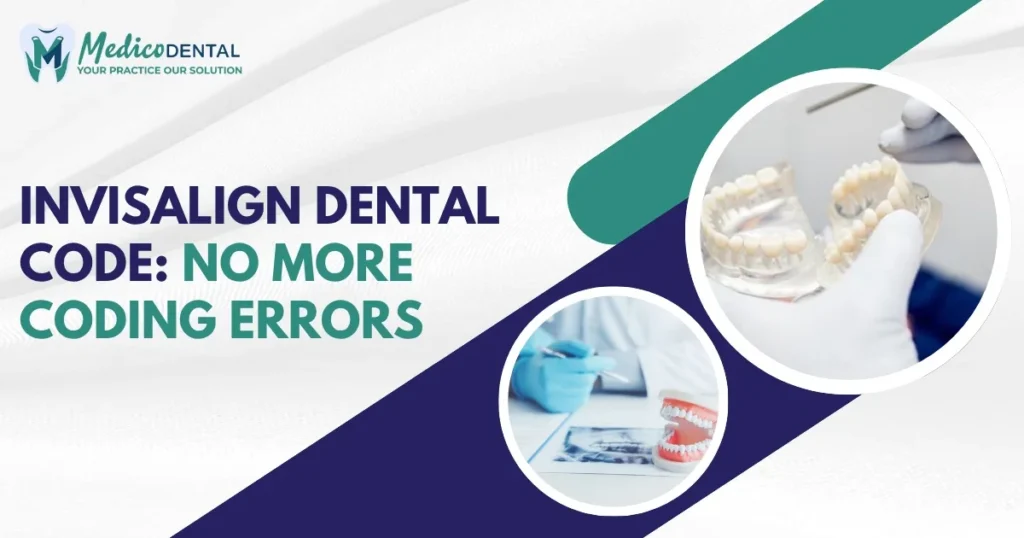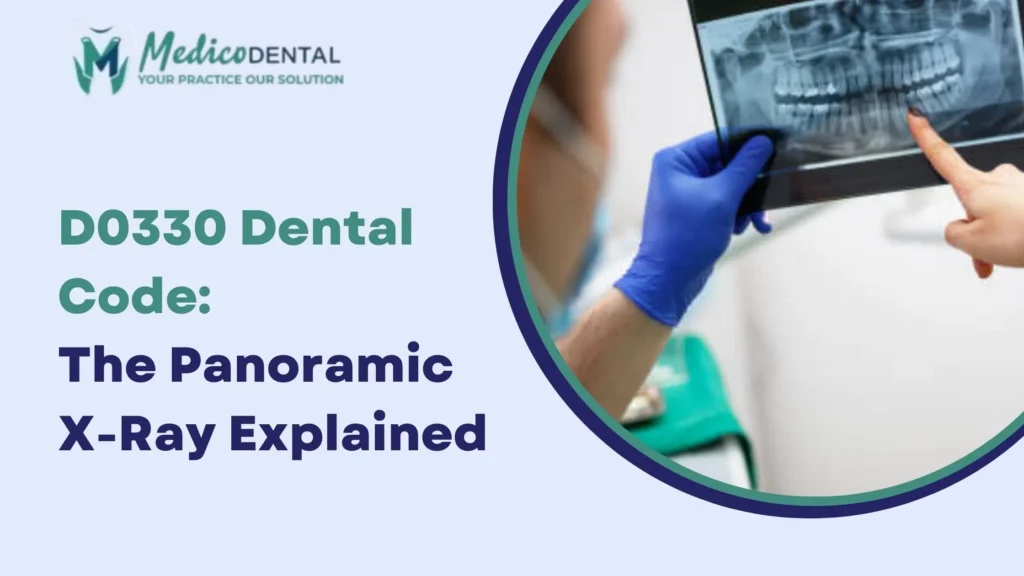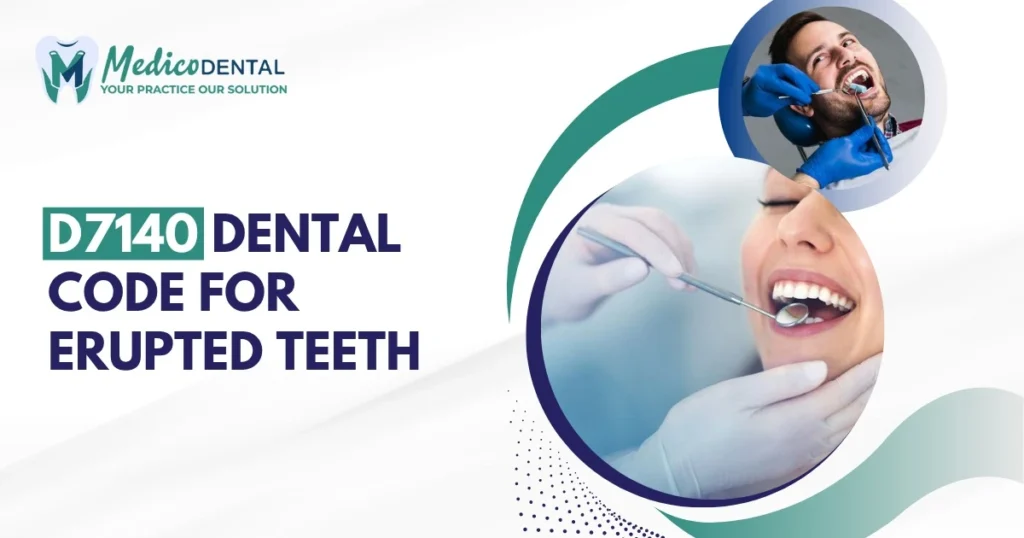Invisalign has revolutionized orthodontic care by providing a clear, comfortable, and aesthetic alternative to traditional braces. However, when it comes to dental billing, understanding the correct Invisalign dental code is crucial for accurate insurance claims and reimbursement. Using the right CDT codes not only ensures compliance but also helps dental professionals streamline administrative tasks, reduce claim denials, and enhance patient satisfaction.
Introduction to Invisalign and Dental Coding
What Invisalign Treatment Involves
Invisalign is an orthodontic system that uses custom made, removable clear aligners to gradually move teeth into the desired position. Unlike metal braces, Invisalign trays are nearly invisible, making them a popular choice among adults and teens who want a discreet treatment option. Each aligner is worn for about one to two weeks before progressing to the next set, and the full course of treatment typically lasts several months to over a year, depending on the complexity of the case.
Since Invisalign treatment involves multiple visits, progress evaluations, and sometimes refinements, the billing process must accurately reflect the scope and duration of the treatment. This is where the Invisalign dental code plays an essential role in documenting and billing orthodontic procedures correctly.
Why Correct Coding Matters in Dental Billing
Accurate dental coding ensures that every step of the Invisalign process is properly reported and reimbursed by insurance providers. Using incorrect or outdated codes can lead to denied claims, delayed payments, and compliance issues. For dental practices, proper dental coding supports:
- Transparent communication between providers and insurers
- Accurate patient estimates for treatment costs
- Streamlined record keeping and audits
By mastering Invisalign specific codes, dental professionals can improve both their financial and operational efficiency.
What Is the Invisalign Dental Code?
Overview of CDT Codes for Invisalign
The Invisalign dental code refers to the CDT (Current Dental Terminology) codes assigned to orthodontic treatments involving clear aligners. These codes are part of the standardized system used by dental professionals across the U.S. for documentation and insurance billing. Each code corresponds to a specific type of orthodontic service, such as limited treatment, comprehensive care, or follow up visits.
Invisalign procedures typically fall under orthodontic treatment codes ranging from D8010 to D8999, depending on the complexity and stage of care. Proper use of these codes ensures that the insurance claim accurately reflects the services rendered and complies with industry standards.
How Invisalign Dental Codes Differ from Traditional Braces
While traditional braces and Invisalign both aim to correct malocclusion, their billing and documentation can differ. Traditional braces often involve separate charges for appliances, adjustments, and retainers. In contrast, Invisalign treatment is billed as a complete orthodontic package that includes aligners, periodic checkups, and refinements.
Invisalign’s coding also tends to use fewer itemized codes since most of the treatment is digitally planned and delivered in advance. Therefore, knowing when to use limited versus comprehensive treatment codes is vital for accurate billing.
Common Invisalign Dental Codes Explained
D8010 D8040: Limited Orthodontic Treatment
These codes are used when the Invisalign treatment focuses on a specific section of the mouth rather than the full arch.
- D8010 is used for limited orthodontic treatment in primary dentition (young children).
- D8020 is for transitional dentition (mixed primary and permanent teeth).
- D8030 applies to limited orthodontic treatment in adolescent patients.
- D8040 covers limited orthodontic treatment for adults.
Limited treatment usually involves minor tooth movement or addressing localized issues such as crowding or spacing in a small area. These codes help insurance providers distinguish between short term and comprehensive aligner care.
D8070 D8090 Comprehensive Orthodontic Treatment
These codes apply when Invisalign is used for full mouth orthodontic correction.
- D8070 covers comprehensive orthodontic treatment in transitional dentition.
- D8080 applies to adolescents with permanent dentition.
- D8090 is used for comprehensive treatment of adult patients.
Comprehensive treatment includes the full set of aligners, regular monitoring, and any refinements necessary to achieve the desired results. These codes are often billed once, covering the entire course of treatment.
D8660 Pre Orthodontic Treatment Visit
This code is used for the diagnostic phase before starting Invisalign. It includes consultation, impressions, digital scans, X rays, and treatment planning. Proper use of D8660 helps document the initial evaluation and ensures that insurance companies recognize the time and expertise involved in preparing a treatment plan.
D8670 Periodic Orthodontic Treatment Visit
D8670 covers ongoing Invisalign checkups where the orthodontist monitors progress and provides the next set of aligners. These visits are essential for tracking tooth movement, addressing fit issues, and ensuring the treatment stays on schedule. Some practices include this code in the overall treatment fee, while others bill it per visit, depending on insurance contracts.
D8999 Unspecified Orthodontic Procedure
This code is used when a specific Invisalign related procedure does not fit under any of the standard CDT codes. It may apply to services like replacement aligners, mid treatment refinements, or special adjustments not typically included in standard treatment packages. Documentation and a detailed narrative must accompany this code to justify reimbursement.
How to Use the Correct Invisalign Dental Code
Determining Treatment Type and Duration
The first step in selecting the right Invisalign dental code is determining whether the treatment is limited or comprehensive. Limited treatments address minor corrections, while comprehensive cases involve the full dentition and longer treatment durations. The patient’s age, dentition type (primary, transitional, or permanent), and treatment goals also influence code selection.
Aligning Codes with Clinical Documentation
Each Invisalign claim should include clear documentation that supports the selected code. Accurate clinical notes, progress reports, and digital scan records are crucial. Insurance companies often request supporting documentation to verify the necessity and scope of the treatment. Aligning the CDT code with the patient’s chart notes helps prevent delays or denials during the review process.
Insurance and Reimbursement Considerations
Different insurance providers interpret Invisalign codes differently. Some may reimburse limited treatment codes but not comprehensive ones, or vice versa. Therefore, it’s essential to verify each patient’s orthodontic coverage before submitting claims. Additionally, pre authorization using D8660 ensures both patient and provider have a clear understanding of coverage terms, co pays, and out of pocket costs.
Common Mistakes in Invisalign Dental Coding
Using General Orthodontic Codes for Clear Aligners
One of the most common errors is using codes intended for traditional braces to bill Invisalign procedures. Since aligner therapy differs in appliance type and workflow, this mistake can lead to denied or reduced claims. Always use the designated Invisalign or orthodontic CDT codes to ensure accurate reimbursement.
Incomplete Documentation for Pre Authorization
Insurance companies often require detailed documentation before approving Invisalign coverage. Submitting claims without full diagnostic records such as X rays, photos, or digital scans can delay approval. Properly coded and well documented claims demonstrate medical necessity and help speed up reimbursement.
Miscommunication Between Front Desk and Clinical Team
In many practices, billing errors stem from a lack of coordination between administrative and clinical staff. When clinical notes do not match the codes submitted, insurance carriers may question the claim’s validity. Establishing consistent communication between team members and reviewing documentation before claim submission can prevent such issues.
Tips for Maximizing Invisalign Insurance Claims
Verify Patient Coverage Early
Before starting any Invisalign treatment, verifying the patient’s orthodontic coverage is a vital first step. Many insurance plans offer partial coverage for orthodontic treatment, but the specifics can vary widely depending on the provider and the patient’s policy. Some plans treat Invisalign as a cosmetic procedure and may not cover it at all, while others reimburse it at the same rate as traditional braces.
By confirming coverage early, dental offices can provide accurate cost estimates and avoid surprises for patients later in treatment. Front desk teams should review coverage limits, age restrictions, and waiting periods. This proactive approach not only enhances patient trust but also prevents billing disputes after treatment begins.
Submit Detailed Treatment Narratives
A strong treatment narrative can make a significant difference in whether an Invisalign insurance claim is approved or denied. Narratives should clearly describe:
- The patient’s orthodontic condition (e.g., crowding, overbite, misalignment)
- The medical necessity of Invisalign treatment
- The projected duration and expected outcomes
Providing this level of detail helps insurance reviewers understand that Invisalign isn’t just for cosmetic purposes but also addresses functional dental issues. A well written narrative can also support the use of specific Invisalign dental codes, ensuring claims are processed correctly and efficiently.
Keep Accurate Progress Notes and Imaging Records
Throughout the Invisalign treatment, maintaining detailed records is essential. Progress notes, intraoral scans, and photographic documentation help validate the treatment’s necessity and duration. These records are particularly useful if an insurer requests additional information during claim review or if a re submission becomes necessary.
Accurate documentation supports not only claim approval but also long term patient management. It ensures that each stage of the aligner treatment is traceable, demonstrating compliance with coding and billing standards.
The Role of Orthodontic Coding in Practice Efficiency
Streamlining Billing and Claims
Proper orthodontic coding simplifies the billing workflow by ensuring that claims are correctly categorized from the start. When staff members understand and apply the correct Invisalign dental codes, claims are processed faster, reducing the back and forth with insurance providers.
Efficient coding also minimizes the risk of rejections and re submissions, which can otherwise delay payments and burden administrative teams. Using digital billing platforms integrated with patient management systems can further streamline the process and ensure that all coding aligns with clinical documentation.
Enhancing Revenue Cycle Management
Accurate coding plays a crucial role in maintaining a healthy revenue cycle. Each correctly coded Invisalign claim contributes to predictable cash flow and timely reimbursements. Practices that invest in regular staff training and billing audits often see fewer delays and fewer write offs due to claim denials.
Moreover, understanding how CDT codes relate to different insurance plans helps practices structure financial policies more effectively. For instance, knowing which Invisalign codes are covered under comprehensive orthodontic care versus limited treatment allows practices to set clear payment plans for patients from the outset.
Reducing Claim Denials for Invisalign Procedures
Claim denials are often the result of coding inaccuracies, insufficient documentation, or misunderstandings about orthodontic coverage. By maintaining consistency between clinical records and billing data, practices can significantly reduce denial rates.
Creating internal checklists for claim submission including verifying codes, attaching narratives, and confirming pre authorizations helps prevent common errors. Every approved claim strengthens the financial stability of the practice while maintaining patient satisfaction through transparent billing practices.
Working with Insurance Providers on Invisalign Codes
Understanding Provider Specific Rules
Each insurance provider has its own guidelines regarding orthodontic coding and Invisalign coverage. Some insurers classify Invisalign under comprehensive orthodontic codes (such as D8080 or D8090), while others may require unique documentation or additional pre authorization steps.
Dental practices should maintain up to date payer reference sheets that list these requirements for quick access. Regularly reviewing provider policies helps ensure that each claim aligns with insurer expectations, avoiding unnecessary delays or denials.
Managing Adjustments, Re Submissions, and Appeals
Even when claims are coded accurately, denials can still occur due to administrative issues or payer interpretation. When this happens, knowing how to manage re submissions and appeals effectively is key. Practices should:
- Review the insurer’s explanation of benefits (EOB) carefully
- Correct any coding or documentation discrepancies
- Provide additional records or narratives if requested
Timely follow up with insurance representatives can often resolve disputes more efficiently. Having a designated billing coordinator or using a specialized orthodontic billing service can streamline these processes and ensure that nothing falls through the cracks.
Updates and Trends in Invisalign Dental Code Usage
Recent CDT Revisions for Orthodontic Services
The CDT coding system is updated annually to reflect advances in dental technology and treatment methods. In recent years, updates have addressed new orthodontic procedures, including aligner therapy, digital impressions, and 3D scan treatment (D0367) planning.
Practices that stay informed about these revisions can use the most accurate Invisalign dental codes, ensuring compliance and full reimbursement eligibility. Ignoring updates can lead to outdated code usage, resulting in rejected claims or reduced payments.
The Future of Digital Dentistry and Coding Automation
As dental technology continues to evolve, coding and billing processes are becoming more automated and data driven. Cloud based billing systems now integrate directly with practice management and imaging software, allowing for seamless data transfer and automatic code verification.
Artificial intelligence and automation are expected to play a growing role in dental billing, reducing manual errors and speeding up claim processing. For Invisalign providers, adopting digital tools for documentation, billing, and tracking can greatly improve accuracy and efficiency, keeping practices ahead in a rapidly changing field.
Conclusion
Accurate coding is more than just an administrative task it’s a foundation for efficient practice management, regulatory compliance, and fair reimbursement. By understanding and applying the correct Invisalign dental codes, orthodontic teams ensure that every treatment is documented and billed properly. This not only benefits the practice financially but also enhances patient confidence and satisfaction.
Given the complexity of orthodontic billing, many dental practices partner with professional billing experts who specialize in Invisalign and orthodontic coding. These professionals help manage claims, stay compliant with CDT updates, and maximize insurance reimbursements.
By combining precise coding practices with expert billing support, dental offices can focus more on patient care and less on paperwork ultimately building a stronger, more efficient, and patient centered orthodontic practice.
FAQs
What is the Invisalign dental code used for?
Ans. It’s used to document and bill orthodontic treatments involving Invisalign aligners for accurate insurance reimbursement.
Which CDT codes are commonly used for Invisalign treatment?
Ans. Codes D8010 D8040, D8070 D8090, D8660, D8670, and D8999 are commonly used based on treatment type and stage.
Why is accurate Invisalign coding important for dental practices?
Ans. It ensures compliance, prevents claim denials, and supports efficient reimbursement from insurance providers.
Can insurance cover Invisalign treatment?
Ans. Yes, many insurance plans cover Invisalign similar to braces, but coverage depends on the policy and provider.
How can dental offices avoid claim denials for Invisalign?
Ans. By verifying coverage early, using correct codes, submitting detailed narratives, and maintaining accurate documentation.



